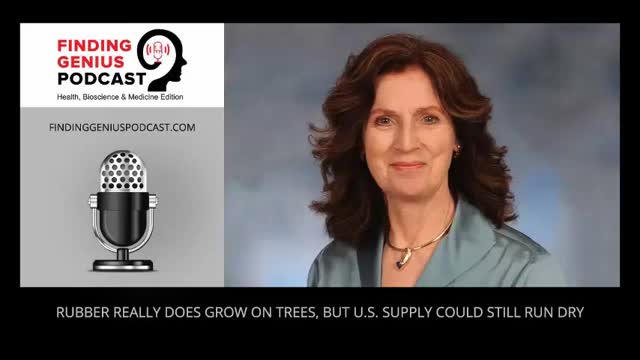Premium Only Content

Rubber Really Does Grow on Trees, but U.S. Supply Could Still Run Dry
There’s not one sector of our economy that isn’t completely dependent upon a secure, natural rubber supply. But 100% of natural rubber is produced outside of the U.S., putting us at risk of running out due to supply chain disruptions.
Over 40 million metric tons of natural rubber are made annually – almost 50% of all the rubber used globally, synthetic included.
What would things look like without the 50,000+ items that require natural rubber?
Tune in to learn:
1) Where most rubber tree plantations exist today
2) Why natural rubber isn’t produced in the U.S. (and who controls 80% of it)
3) What would happen if natural rubber supplies ran out
4) How latex is collected from trees and turned into rubber
5) Why surgeons don’t like to use synthetic latex gloves
6) South American leaf blight (SALB) – what it is and how quickly it can devastate rubber tree plantations
Katrina Cornish is focused on developing domestic rubber-producing crops that can provide the rubber and latex we need for critical applications in every industry. She explains what this entails, the ins and outs of the natural rubber production process, what natural rubber offers that synthetic rubber cannot, different types of natural rubber, and so much more.
Tune in for the full conversation.
-
 0:34
0:34
FGP
10 days ago🎭 The Power Of Emotional Specificity 🎯
50 -
 LIVE
LIVE
Vigilant News Network
18 hours agoRFK Jr. Hearing EXPOSES Corrupt Politicians in Humiliating Scandal | Media Blackout
1,381 watching -
 LIVE
LIVE
Tate Speech by Andrew Tate
1 hour agoEMERGENCY MEETING EPISODE 105 - UNBURDENED
12,308 watching -
 1:01:18
1:01:18
Tactical Advisor
3 hours agoBuilding a 308 AR15 Live! | Vault Room Live Stream 016
27K5 -
 11:33
11:33
DeVory Darkins
18 hours ago $16.54 earnedJustin Trudeau PANICS after Trump slaps Canada with AGGRESSIVE Tariffs
78.6K172 -
 19:11
19:11
Stephen Gardner
1 day ago🔥HOLY CRAP! Chuck Schumer UNDER INVESTIGATION | 3 HUGE Trump MOVES explained!
92.2K247 -
 4:53:35
4:53:35
Rotella Games
9 hours agoGrand Theft America - GTA IV | Day 4
42K4 -
 LIVE
LIVE
Scottish Viking Gaming
7 hours ago💚Rumble :|: Sunday Funday :|: Rumble Fam Knows What's Up!!
272 watching -
 LIVE
LIVE
ttvglamourx
6 hours ago $2.69 earnedEGIRL VS TOXIC COD LOBBIES !DISCORD
334 watching -
 3:19:17
3:19:17
LumpyPotatoX2
8 hours agoSCUM: Lumpy Land RP Server - Day #1 - #RumbleGaming
57.9K2